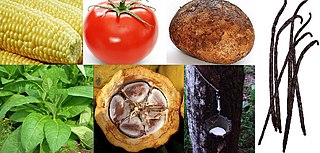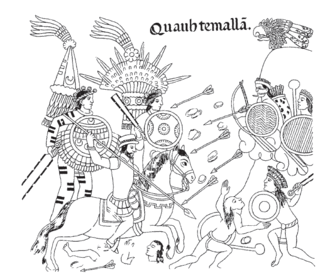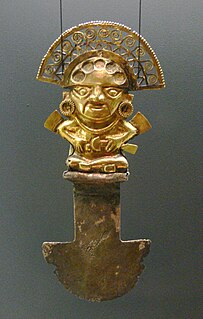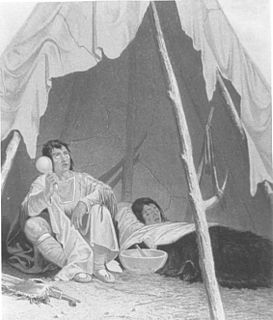 W
WThe pre-Columbian era incorporates all period subdivisions in the history of the Americas before the appearance of significant European influences on the American continent, spanning the time of the original settlement in the Upper Paleolithic period to European colonization during the Early Modern period.
 W
W1491: New Revelations of the Americas Before Columbus is a 2005 non-fiction book by American author and science writer Charles C. Mann about the pre-Columbian Americas. It was the 2006 winner of the National Academies Communication Award for best creative work that helps the public understanding of topics in science, engineering or medicine.
 W
WThe Arawak are a group of indigenous peoples of South America and of the Caribbean. Specifically, the term "Arawak" has been applied at various times to the Lokono of South America and the Taíno, who historically lived in the Greater Antilles and northern Lesser Antilles in the Caribbean. All these groups spoke related Arawakan languages.
 W
WThe cargo system is a collection of secular and religious positions held by men or households in rural indigenous communities throughout central and southern Mexico and Central America. These revolving offices, or cargos, become the unpaid responsibility of men who are active in civic life. They typically hold a given post for a term of one year, and alternate between civic and religious obligations from year to year. Office holders execute most of the tasks of local governments and churches. Individuals who hold a cargo are generally obligated to incur the costs of feasting during the fiestas that honor particular saints.
 W
WClassification of indigenous peoples of the Americas is based upon cultural regions, geography, and linguistics. Anthropologists have named various cultural regions, with fluid boundaries, that are generally agreed upon with some variation. These cultural regions are broadly based upon the locations of indigenous peoples of the Americas from early European and African contact beginning in the late 15th century. When indigenous peoples have been forcibly removed by nation-states, they retain their original geographic classification. Some groups span multiple cultural regions.
 W
WThe Columbian exchange, also known as the Columbian interchange, named after Christopher Columbus, was the widespread transfer of plants, animals, culture, human populations, technology, diseases, and ideas between the Americas, West Africa, and the Old World in the 15th and 16th centuries. It also relates to European colonization and trade following Christopher Columbus's 1492 voyage. Invasive species, including communicable diseases, were a byproduct of the exchange. The changes in agriculture significantly altered global populations. The most significant immediate impact of the Columbian exchange was the cultural exchanges and the transfer of people between continents.
 W
WConquistadors were the knights, soldiers and explorers of the Spanish and the Portuguese Empires. During the Age of Discovery, conquistadors sailed beyond Europe to the Americas, Oceania, Africa, and Asia, conquering territory and opening trade routes. They brought colonialism to much of the world for Spain and Portugal in the 16th, 17th, and 18th centuries.
 W
WThe Council of the Indies; officially, the Royal and Supreme Council of the Indies, was the most important administrative organ of the Spanish Empire for the Americas and the Philippines. The crown held absolute power over the Indies and the Council of the Indies was the administrative and advisory body for those overseas realms. It was established in 1524 by Charles V to administer "the Indies," Spain's name for its territories. Such an administrative entity, on the conciliar model of the Council of Castile, was created following the Spanish conquest of the Aztec empire in 1521, which demonstrated the importance of the Americas. Originally an itinerary council that followed Charles V, it was subsequently established as an autonomous body with legislative, executive and judicial functions by Philip II of Spain and placed in Madrid in 1561. The Council of the Indies was abolished in 1812 by the Cortes of Cádiz, briefly restored in 1814 by Ferdinand VII of Spain, and definitively abolished in 1834 by the regency, acting on behalf of the four-year-old Isabella II of Spain.
 W
WThe European colonization of the Americas describes the Age of Exploration and the resulting conquest and establishment of Western European control in what is now considered North and South America. Europe had been preoccupied with internal wars and was slowly recovering from the loss of population caused by the Black Death; thus the rapid rate at which it grew in wealth and power was unforeseeable in the early 15th century. European colonization impacted the political systems, geographic boundaries, and languages that predominate in the hemisphere's largely independent states today.
 W
WThe Havana Plan Piloto was a 1955-1958 urban proposal by Town Planning Associates which included Paul Lester Wiener, Paul Schulz, the Catalan architect Josep Lluis Sert, Seely Stevenson of Value & Knecht, Consulting Engineers seeking to combine "architecture, planning, and law," in a project heavily influenced by the politics of Fulgencio Batista which in turn were dictated by his involvement with the American Mafia and their desire to augment United States tourism, and thru his architects, the modernist principles of CIAM and the Athens Charter. The Charter got its name from the location of the fourth CIAM conference in 1933, which, due to the deteriorating political situation in Russia, took place on the in SS Patris II bound for Athens from Marseilles. This conference is documented in a film commissioned by Sigfried Giedion and made by his friend Laszlo Moholy-Nagy "Architects' Congress." The Charter had a significant impact on urban planning after World War II and, thru Josep Lluis Sert and Paul Lester Wiener, on the proposed modernization of Havana and in the effort erase all vestiges of the 16th-century city.
 W
WThe Inca Empire, also known as the Incan Empire and the Inka Empire, was the largest empire in pre-Columbian America. The administrative, political and military center of the empire was in the city of Cusco. The Inca civilization arose from the Peruvian highlands sometime in the early 13th century. Its last stronghold was conquered by the Spanish in 1572.
 W
WIndian auxiliaries or indios auxiliares is the term used in old Spanish chronicles and historical texts for the indigenous peoples who were integrated into the armies of the Spanish conquistadors with the purpose of supporting their advance and combat operations during the Conquest of America. They acted as guides, translators, or porters and in this role were also called yanakuna, particularly within the old Inca Empire and Chile. The term was also used for formations composed of indigenous warriors or Indios amigos, which they used for reconnaissance, combat, and as reserve in battle. The auxiliary Indians remained in use after the conquest, during some revolts, in border zones and permanent military areas, as in Chile in the Arauco War.
 W
WIndian reductions in the Andes were settlements in the former Inca Empire which were created by Spanish authorities and populated by the forcible relocation of indigenous Andean populations. The purpose of the Spanish Empire was to gather native populations into centers called "Indian reductions", in order to Christianize, tax, and govern them more effectively.
 W
WThe Laws of the Indies are the entire body of laws issued by the Spanish Crown for the American and the Philippine possessions of its empire. They regulated social, political, religious, and economic life in these areas. The laws are composed of myriad decrees issued over the centuries and the important laws of the 16th century, which attempted to regulate the interactions between the settlers and natives, such as the Laws of Burgos (1512) and the New Laws (1542).Throughout the 400 years of Spanish presence in these parts of the world, the laws were compiled several times, most notably in 1680 under Charles II in the Recopilación de las Leyes de los Reins de las Indias. This became considered the classic collection of the laws, although later laws superseded parts of it, and other compilations were issued.
 W
WMetallurgy in pre-Columbian America is the extraction, purification and alloying of metals and metal crafting by Indigenous peoples of the Americas prior to European contact in the late 15th century. Indigenous Americans have been using native metals from ancient times, with recent finds of gold artifacts in the Andean region dated to 2155–1936 BCE, and North American copper finds dated to approximately 5000 BCE. The metal would have been found in nature without need for smelting, and shaped into the desired form using hot and cold hammering without chemical alteration or alloying. To date "no one has found evidence that points to the use of melting, smelting and casting in prehistoric eastern North America." In South America the case is quite different. Indigenous South Americans had full metallurgy with smelting and various metals being purposely alloyed. Metallurgy in Mesoamerica and Western Mexico may have developed following contact with South America through Ecuadorian marine traders.
 W
WThe Neo-Inca State, also known as the Neo-Inca state of Vilcabamba, was the Inca state established in 1537 at Vilcabamba by Manco Inca Yupanqui. It is considered a rump state of the Inca Empire (1438–1533), which collapsed after the Spanish conquest in the mid-1500s. The Neo-Inca State lasted until 1572, when the last Inca stronghold was conquered, and the last ruler, Túpac Amaru, was captured and executed, thus ending the political authority of the Inca state.
 W
WPainting in the Americas before European colonization is the Precolumbian painting traditions of the Americas. Painting was a relatively widespread, popular and diverse means of communication and expression for both religious and utilitarian purpose throughout the regions of the Western Hemisphere. During the period before and after European exploration and settlement of the Americas; including North America, Central America, South America and the islands of the Caribbean, the Bahamas, the West Indies, the Antilles, the Lesser Antilles and other island groups, indigenous native cultures produced a wide variety of visual arts, including painting on textiles, hides, rock and cave surfaces, bodies especially faces, ceramics, architectural features including interior murals, wood panels, and other available surfaces. Many of the perishable surfaces, such as woven textiles, typically have not been preserved, but Precolumbian painting on ceramics, walls, and rocks have survived more frequently.
 W
WPopulation figures for the indigenous peoples of the Americas prior to colonization have proven difficult to establish. Scholars rely on archaeological data and written records from European settlers; most scholars writing at the end of the 19th century estimated that the pre-Columbian population was as low as 10 million, but by the end of the 20th century most scholars gravitated toward an estimate of around 50 million—with some historians arguing for an estimate of 100 million or more.
 W
WPre-Columbian cuisine refers to the food and drink consumed by the people who inhabited the Americas before Christopher Columbus explored the region and introduced food and crops from Europe. Though the Columbian Exchange introduced many new animals and plants to the Americas, cultures of their own already existed there, including the Aztec, Mayan, Incan, and Native American. The development of agriculture allowed the many different cultures to transition from hunting to staying in one place. A major element of this cuisine is maize, which began being grown in central Mexico. Other crops that flourished in the Americas include amaranth, wild rice, and lima beans.
 W
WReductions or in Spanish reducciones, also called 'congregaciones', were settlements created by Spanish rulers in Spanish America and the Spanish East Indies. The Spanish relocated, forcibly in many cases, indigenous inhabitants of their colonies into urban settlements modeled on those in Spain. In Portuguese-speaking Latin America, such reductions were also called aldeias.
 W
WThe settlement of the Americas is widely accepted to have begun when Paleolithic hunter-gatherers entered North America from the North Asian Mammoth steppe via the Beringia land bridge, which had formed between northeastern Siberia and western Alaska due to the lowering of sea level during the Last Glacial Maximum. These populations expanded south of the Laurentide Ice Sheet and spread rapidly throughout both North and South America, by 14,000 years ago. The earliest populations in the Americas, before roughly 10,000 years ago, are known as Paleo-Indians.
 W
WSlavery among the indigenous peoples of North and South America took many forms. After first European settlers arrived, five Native American tribes came to own black slaves, imitating the Europeans.
 W
WThe Spanish colonization of the Americas began under the Crown of Castile and spearheaded by the Spanish conquistadors. The Americas were invaded and incorporated into the Spanish Empire, with the exception of Brazil, British America, and some small regions in South America and the Caribbean. The crown created civil and religious structures to administer this vast territory. The main motivations for colonial expansion were profit through resource extraction and the spread of Catholicism through indigenous conversions.
 W
WThe Spanish missions in the Americas were Catholic missions established by the Spanish Empire during the 16th to 19th centuries in the period of the Spanish colonization of the Americas. These missions were scattered thoughout the entirety of the Spanish colonies, which extended from Mexico and southwestern portions of the current-day United States to Argentina and Chile.
 W
WThe Valladolid debate (1550–1551) was the first moral debate in European history to discuss the rights and treatment of an indigenous people by conquerors. Held in the Colegio de San Gregorio, in the Spanish city of Valladolid, it was a moral and theological debate about the conquest of the Americas, its justification for the conversion to Catholicism, and more specifically about the relations between the European settlers and the natives of the New World. It consisted of a number of opposing views about the way natives were to be integrated into Spanish society, their conversion to Catholicism, and their right.
 W
WThe War of 1812 was a conflict fought between the United States and its allies, and the United Kingdom of Great Britain and Ireland and its allies. It began when the United States declared war in June 1812, and ended in an Anglo–American situation as it existed before the war when a peace treaty agreed to earlier was ratified by the United States in February 1815. Historians in Britain often see it as a minor theatre of the Napoleonic Wars, while historians in North America see it as a war in its own right; it is related to the American Indian Wars, Sixty Years' War, Creek War, and Tecumseh's War.